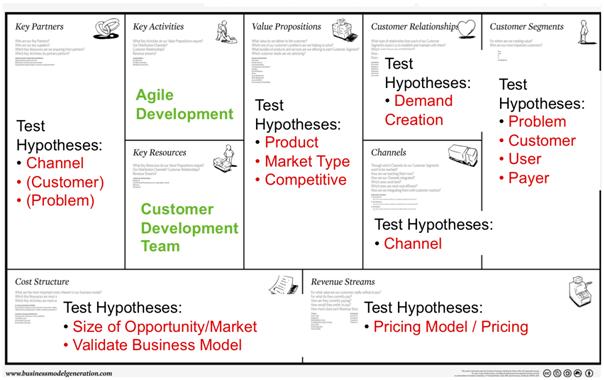Building a startup roadmap to credibility.
Steve Blank and Alexander Osterwalder come together to create a neat way for creating your roadmap to credibility. The questions you have to ask as well as answer so that your business model can get to the next stage.
Frameworks are great but what do you need to include within your road map? How would you recognize it if you ran into it, middle of your street, tomorrow morning?
A roadmap to credibility is a list of steps you need to follow to get to customers (buyers) and revenues (dollars). Our desired end state. Irrespective of who you are pitching to, it is always useful to show that you can see to the end of the road. Every curve, every hitch, every roadblock. Presenting and incorporating such a roadmap helps establish credibility (hence the name) and proves that you have been thinking about how to move forward with execution and testing your assumptions from day one.
A reasonable roadmap to credibility includes a few common themes.
a) A profile of a customer that gives your audience the comfort that you understand who you need to pitch and what buttons you need to press. If you found yourself in a room full of willing strangers with fat checkbooks and fingers burning to write them, which one of them would you focus on and what would you say to him or her?
b) If you could link the customer’s pain to your product features, that would be great. This has less to do with what your product does and more to do with how a specific feature solves or addresses a specific problem or pain point for the customer.
c) The first two elements showcase good design and groundwork. The third time is all about your plan to reach out to them. Add a list of your first ten prospects (maybe more) and a few variations of your sales call script based on the product customer fit and you are golden.
If you play chess, you are essentially building a list of your moves based on a number of possible scenarios. There are decisions that need to be taken across multiple dimensions a new business operates across and your roadmap identifies both data and action items required before a given ticket is punched or a hole is plugged. Combine this with the sequence or path an idea follows from conception to commercial usage and you have got a fair idea of all the key decision points and data elements you would need to touch to get to your end game.
Starting up, we need a framework or a mind map to build a task list. The framework shared by Alex and Steve does just that by focusing on the core hypothesis that you need to test, the market product fit you need to confirm and the User/Payer pitch you need to document. The two of them have gone out and said and done everything that you need to get started.

Go forth, test and build.
Here is Alex’s original presentation that walks through his framework. View more presentations from Alexander Osterwalder
